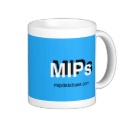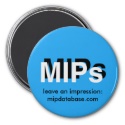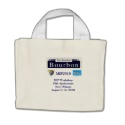|
|
Reference type: Journal
Authors: Byrne ME, Salian V
Article Title: Molecular imprinting within hydrogels II: Progress and analysis of the field.
Publication date: 2008
Journal: International Journal of Pharmaceutics
Volume: 364
Issue: (2)
Page numbers: 188-212.
DOI: 10.1016/j.ijpharm.2008.09.002
Alternative URL: http://www.sciencedirect.com/science/article/B6T7W-4TDC0DC-2/2/5cae200b869f6501e73e1ed7120b5939
Abstract: In the past decade, there has been an exponential increase in the number of papers describing molecular imprinting in hydrogels, a technique which creates memory for template molecules within a flexible macromolecular structure. Macromolecular memory or structural plasticity of polymer chains is a superior description of weakly crosslinked imprinted networks since significant flexibility can occur within the polymer chains. The focus of this article is to review and highlight work in the field describing the imprinting strategy within hydrogels and associated challenges, characterization methods of imprinted gels, current and potential translational applications, and future strategies and directions. This paper also describes ways to improve binding parameter efficacy and presents significant areas of opportunity to further describe, characterize, and understand imprinted gels. An analysis of the literature indicates that imprinting in hydrogels leads to significant improvements in template affinity, capacity, and selectivity over non-templated hydrogels for a number of templates such as ions, small and moderate molecular weight molecules, proteins, viruses, DNA, and cells. However, the influence of imprinting on the transport of template is much more complex, with little attention of most studies to structural analysis or discussion of the gel porosity/tortuosity in the control of template transport. Responsive, intelligent imprinted hydrogels are also highlighted that exhibit reversibly modulated template binding and transport. It is clear that this field has transitioned from infancy and is leading to breakthroughs in a number of areas such as controlled and modulated drug delivery, diagnostic sensors, and separation. For example in drug delivery, imprinting can lead to delayed transport and provides further control of therapeutic transport through the macromolecular structure as well as optimizes the number of therapeutic molecules to polymer chains
Template and target information: Review - MIPs hydrogels
Author keywords: molecular imprinting, Macromolecular memory, hydrogel, Responsive imprinted hydrogel, controlled release, drug delivery, modulated release
|


 mipdatabase.com logo mug
mipdatabase.com logo mug







 mipdatabase.com logo magnet
mipdatabase.com logo magnet







 MIP Workshop MIP2010 Tote bag
MIP Workshop MIP2010 Tote bag






